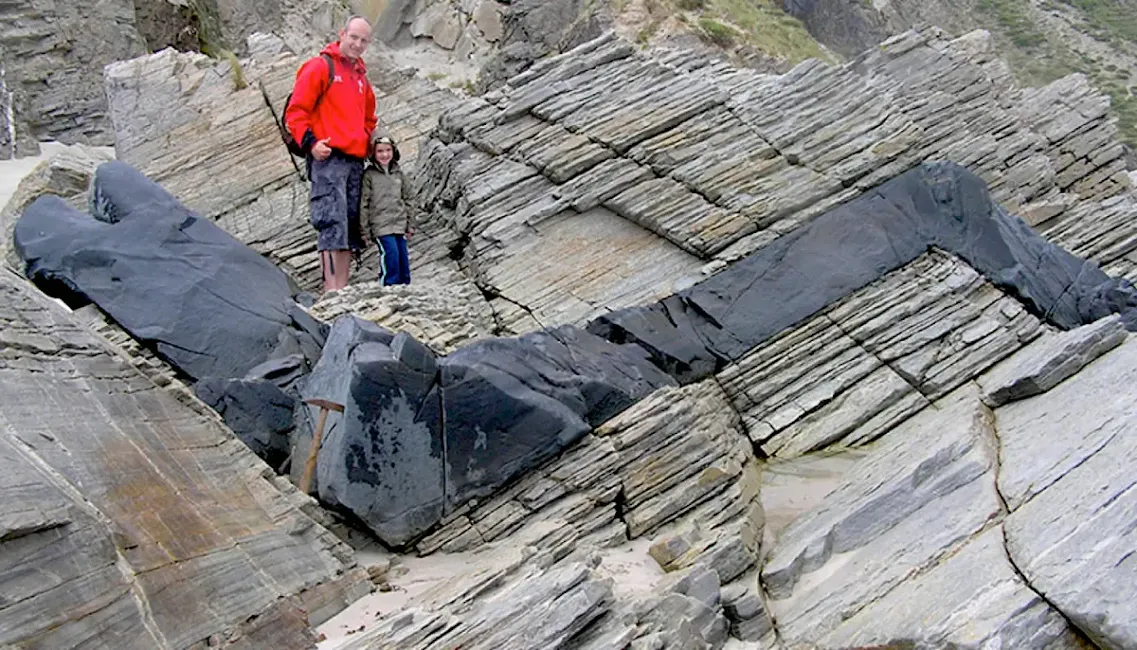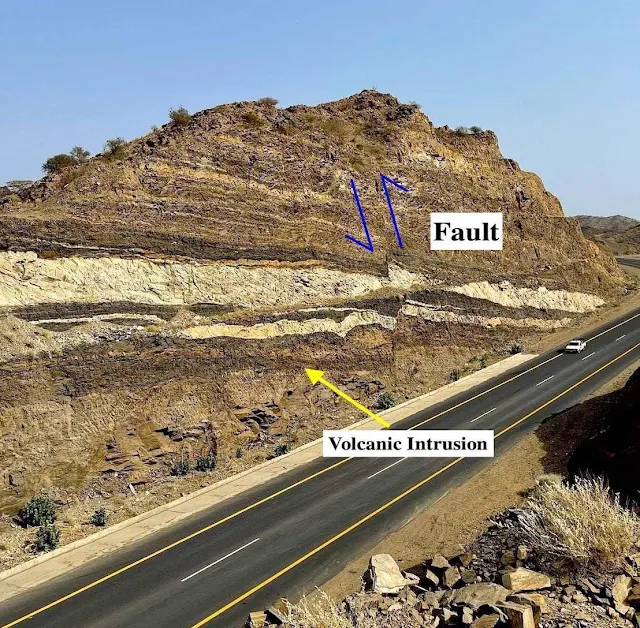Cross-Cutting Relationships
The principle of cross-cutting relationships states that any geologic feature that cuts across, or disrupts another feature must be younger than the feature that is disrupted. This is because the cutting feature could not have formed until after the disrupted feature had been in place.
For example, if a dike of igneous rock cuts through a layer of sedimentary rock, the dike must be younger than the sedimentary rock. This is because the dike could not have formed until after the sedimentary rock had been deposited and solidified.
It was first developed by Danish geological pioneer Nicholas Steno in Dissertationis prodromus (1669) and later formulated by James Hutton in Theory of the Earth (1795) and embellished upon by Charles Lyell in Principles of Geology (1830).
Cross-cutting relationships can be used to determine the relative ages of rock strata and other geological structures. They are one of the basic principles of geology that is used to understand the history of the Earth.
 |
| Faults cuts through layers of sedimentary rocks. |
Cross-Cutting Types
There are several basic types of cross-cutting relationships:
Intrusions: An intrusion is a body of igneous rock that has been injected into surrounding rock. Intrusions are younger than the surrounding rock that they intrude.
Faults: A fault is a break in the Earth's crust along which the rocks have been displaced. Faults can be either normal or reverse. Normal faults are those in which the hanging wall (the side of the fault that is above the fault plane) has moved down relative to the footwall (the side of the fault that is below the fault plane). Reverse faults are those in which the hanging wall has moved up relative to the footwall.
Unconformities: An unconformity is a surface of erosion or non-deposition that separates two rock units of different ages. Unconformities can be either angular or non-angular. Angular unconformities are those in which the beds below the unconformity are tilted or folded relative to the beds above the unconformity. Non-angular unconformities are those in which the beds below the unconformity are not tilted or folded relative to the beds above the unconformity.
Fossil: Fossil content can also be used to determine cross-cutting relationships. If a fossil is found in a rock that is cut by another rock, the rock that contains the fossil is older than the rock that cuts it.
Cross-cutting relationships can be used to determine the relative ages of geologic features. For example, if an intrusion cuts across a fault, then the intrusion must be younger than the fault. If a fault cuts across an unconformity, then the fault must be younger than the unconformity.
 |
| Dikes and sills intruding Dalradian quartzites, Donegal, Ireland. Photo © Prof. Alan Cooper (University of Otago). |
Cross-Cutting Relationships Examples
Here are some examples of cross-cutting relationships:
- A fault cuts through a layer of sedimentary rock.
- A dike of igneous rock cuts through a layer of sedimentary rock.
- A volcanic eruption deposits a layer of ash on top of a layer of sedimentary rock.
- A stream erodes a channel through a layer of sedimentary rock.
 |
| Volcanic dike of igneous rock Cuts pre-existing igneous rocks |
By carefully analyzing cross-cutting relationships, geologists can create a relative chronological framework for the geological history of a region. This information is crucial for understanding the Earth's past, reconstructing ancient environments, and interpreting the processes that have shaped the planet over time.
Read also:
The Principle of Superposition
Principle of Original Horizontality
Relative Dating: Principles and Examples





%20(1).webp)



